Erosion and sediment control
Find out how to minimise soil and sediment runoff. Make your site right.
During rainfall, large amounts of sediment are washed into local waterways. Much of this sediment comes from the exposed soil of cleared land.
How to get your site right
Waterways pollution from your development or construction site is preventable.
It can be prevented by good planning and using the appropriate erosion and sediment controls. Having the right control measures in place is vital. It can also save money and reduce environmental impact.
It is your responsibility to stop sediment and waste from moving off your site.
Waste from construction sites can impact both our waterways and our wildlife. Over a truckload of soil can wash into our waterways for every house under construction. Is your site right?
It's the law
Keeping sediment and litter from our waterways is the right thing to do. It is also required by law. It is an offence under the Environmental Protection Act 1994 to unlawfully deposit soil or other contaminants in waters, a roadside gutter or stormwater drain.
It is also an offence to carry out earthwork that exposes the earth in a way where soil could reasonably expected to wash or otherwise move into waters, a roadside gutter or stormwater drainage, without taking all reasonable and practical measures available.
Under our compliance and enforcement policy, council officers will employ a range of tools to keep our waterways healthy. This may include issuing a statutory notice requiring you to take action, fine or prosecution through courts.
Fines range from $2,322 to $12,097.50 (2024).
New homeowners
New homeowners
Once you take possession of your new home, it is your responsibility to stop soil moving off your property. The easiest way to control erosion around your property is to include turf and landscaping in your build contract.
If your new home has no turfing and landscaping, you should maintain sediment controls (such as sediment fence) until cover is achieved. Bare soil can be covered with grass, gravel, mulch, geofabric or even a tarp.
Read more in our factsheet for home owners (DOCX, 2.3MB).
Builders and renovators
Builders and renovators
Reasonable and practical measures you can take to avoid sediment and waste moving off site are:
- detailed in this interactive diagram
- described in this video
- outlined in the erosion and sediment control toolkit for house builders
- summarised in our fact sheet (DOCX, 2.6MB)
Use our helpful checklist for builders (DOCX, 3.5MB).
Prevent erosion
The most effective way to stop sediment entering our waterways is always to minimise the amount of exposed soil. You should:
- cover stockpiles
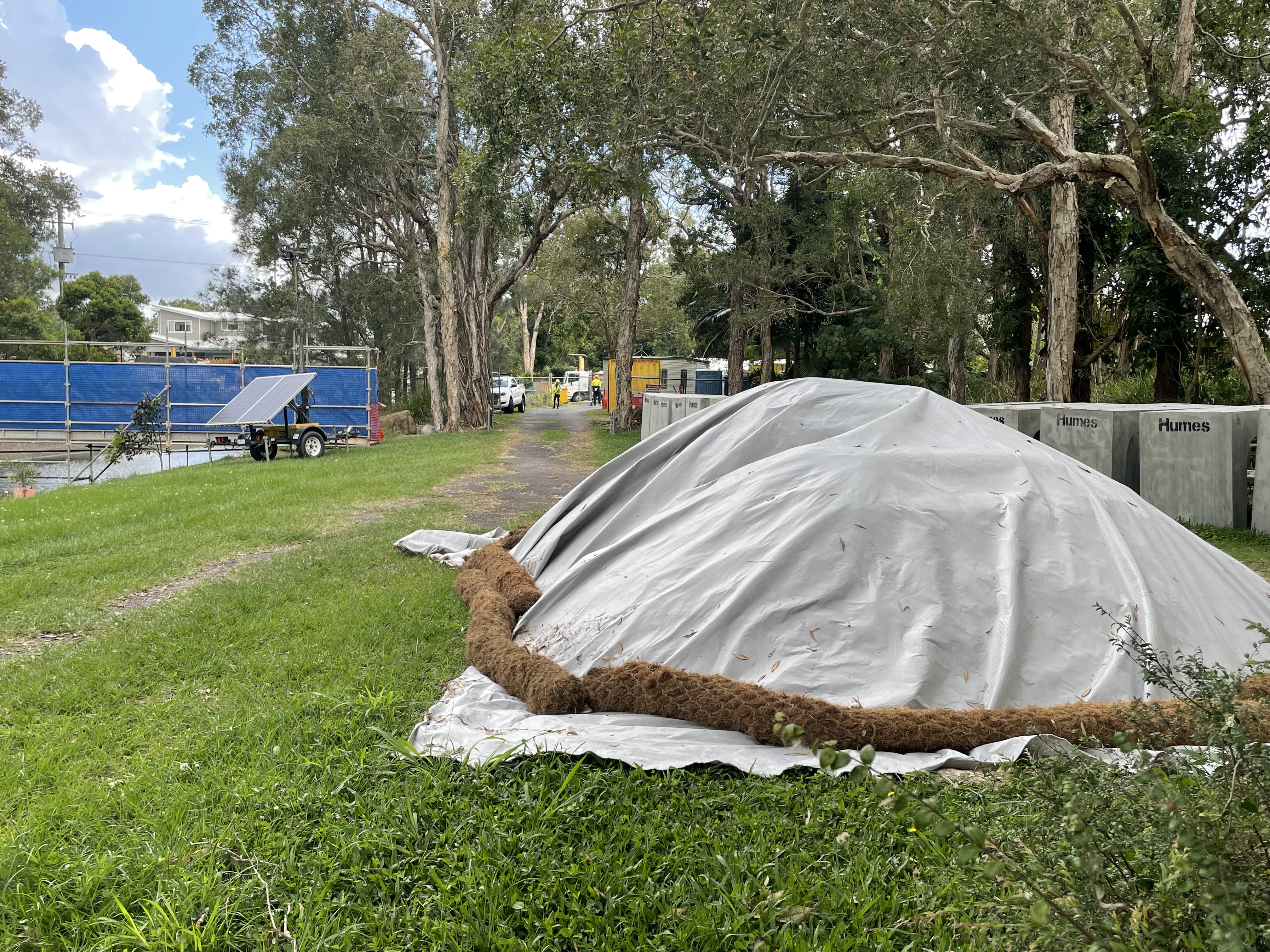
- only clear the site just before commencing works
- stabilise disturbed stormwater trenches with mulch or replace turf
- leave all soil stabilised at the end of construction through landscaping or soil binder
- maintain grass on the verge, and on adjacent properties. Avoid driving or parking on these areas.
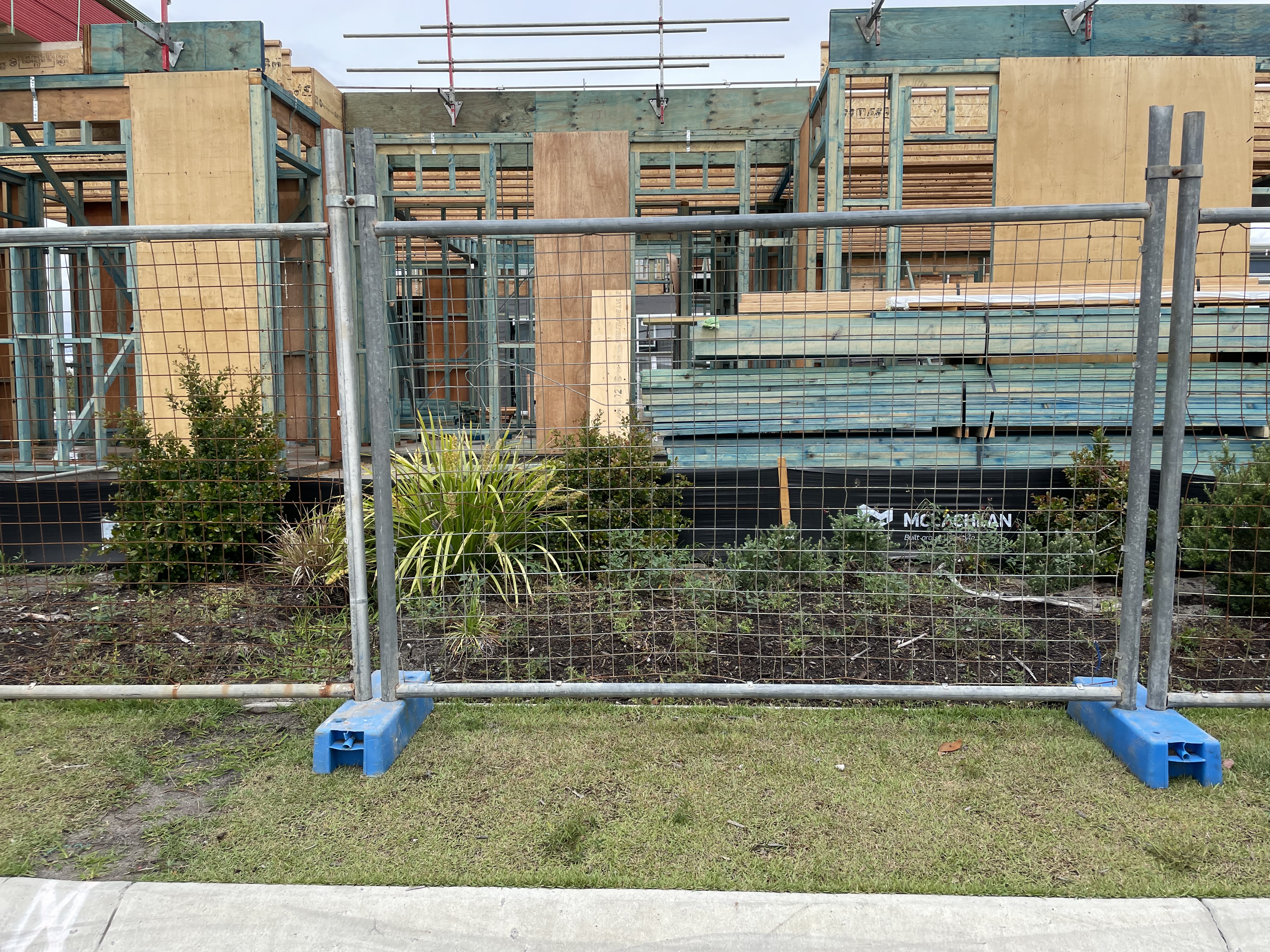
This will also stop your site from becoming difficult to work on. Find out more from Healthy Land and Water:
- soil cover fact sheet
- stockpile protection fact sheet
- kerb to lot groundcover fact sheet.
Control drainage
10mm of rain on an average size house roof can produce 2000 litres of water. Connect temporary or permanent downpipes to council's stormwater systems soon as the roof goes on. This will assist keeping your site dry and workable.
Find out more from Healthy Land and Water, downpipes and stormwater diversion fact sheet.
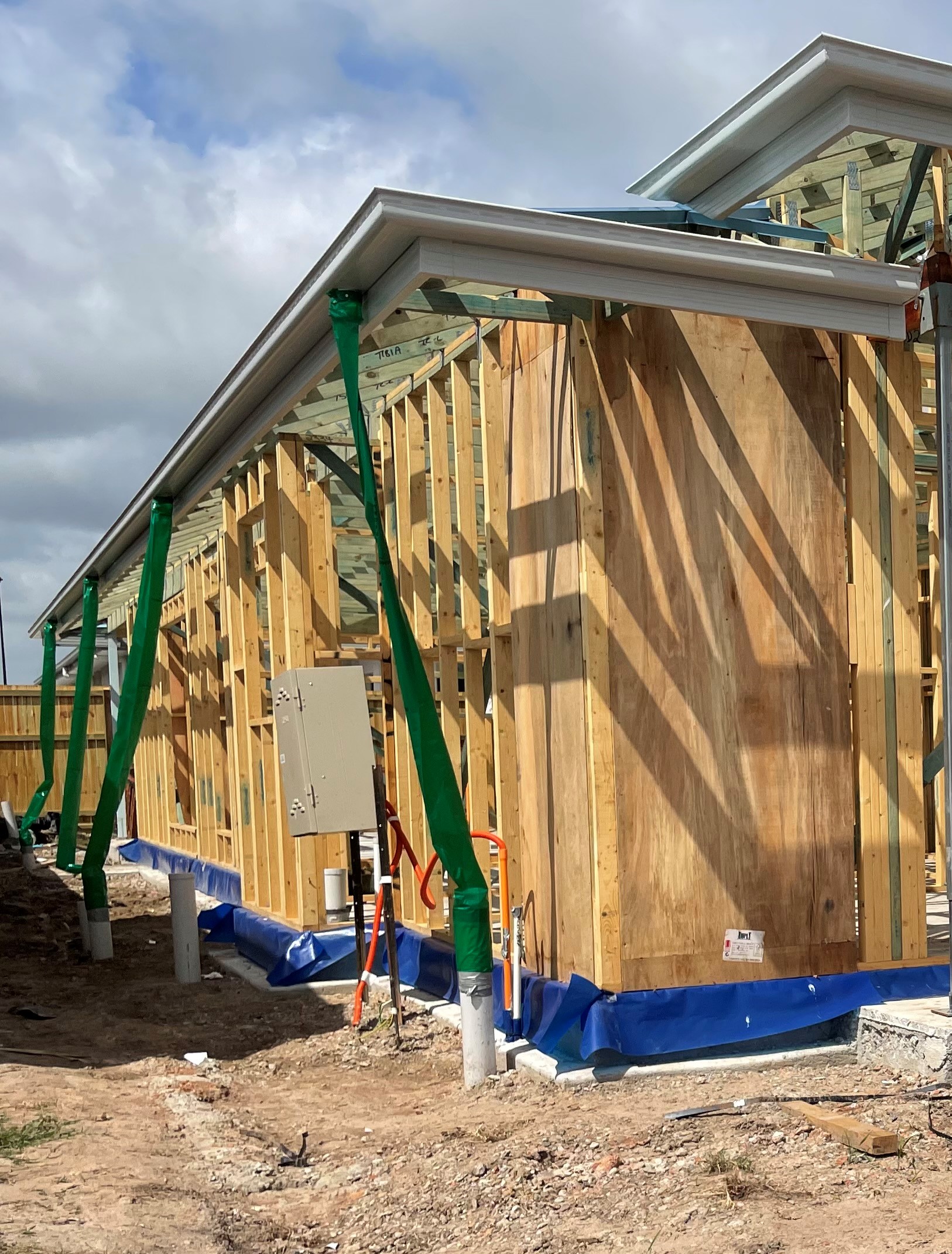
Capture sediment
Stop sediment leaving your site. Install sediment barrier; such as sediment fencing, on all sides of the property where water may flow.
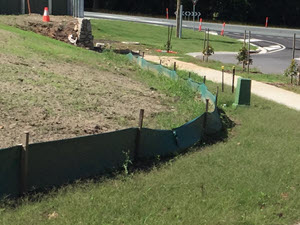
Install a rock pad to connect the building slab to the access point. This prevents sediment tracking onto the road. Use large diameter crushed rock. Avoid erosion at the edges by diverting runoff from the rock pad to other sediment controls.
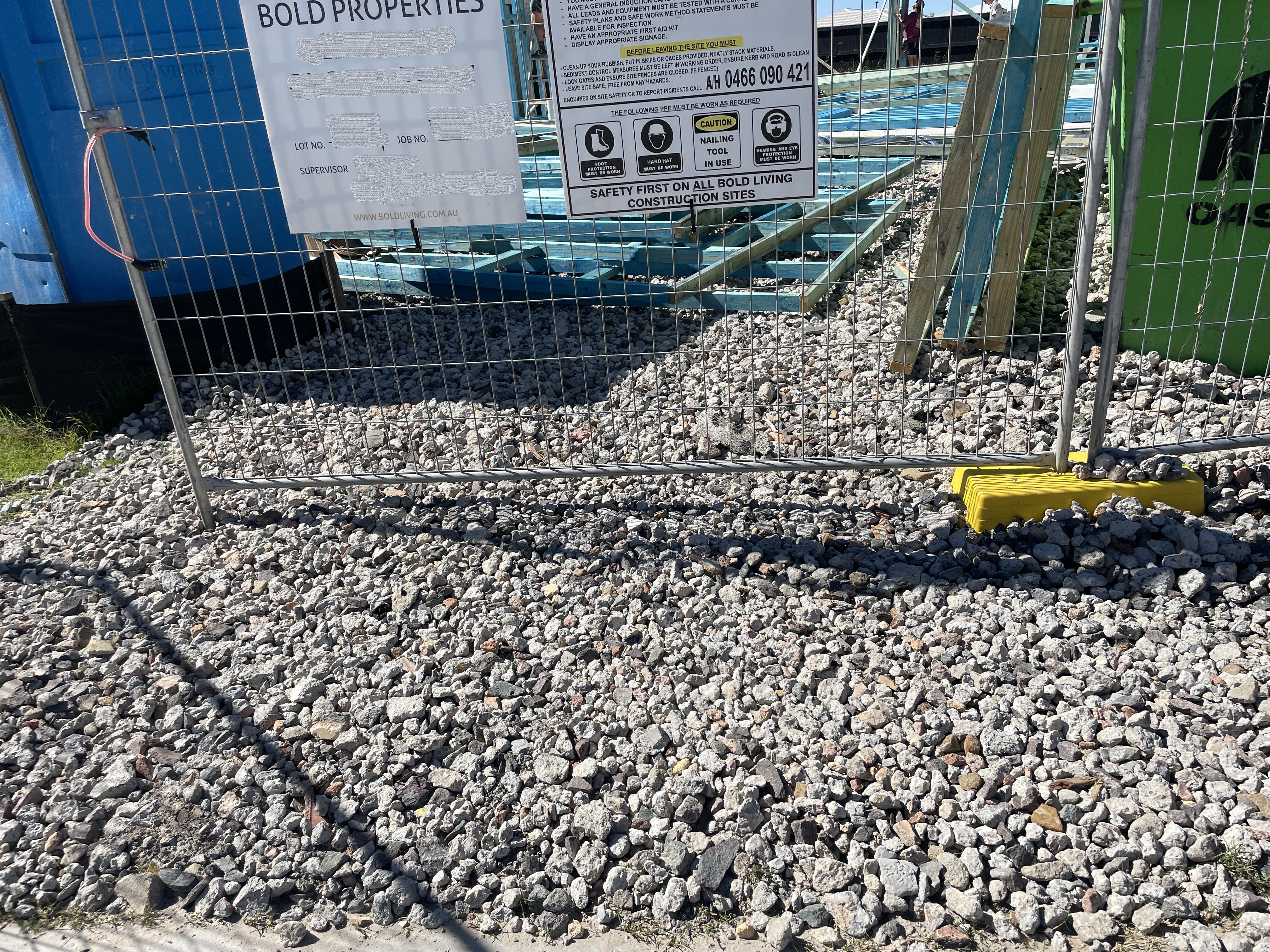
Find out more from Healthy Land and Water:
- coarse sediment barrier fact sheet
- entry and exit rock pad fact sheet.
Stop litter and other contaminants
Place all waste in a skip bin, preferably with a lid. Waste on site can cause pollution, especially on windy days. Contain polystyrene waffle pod waste in bags or in your bin and remove at end of day.
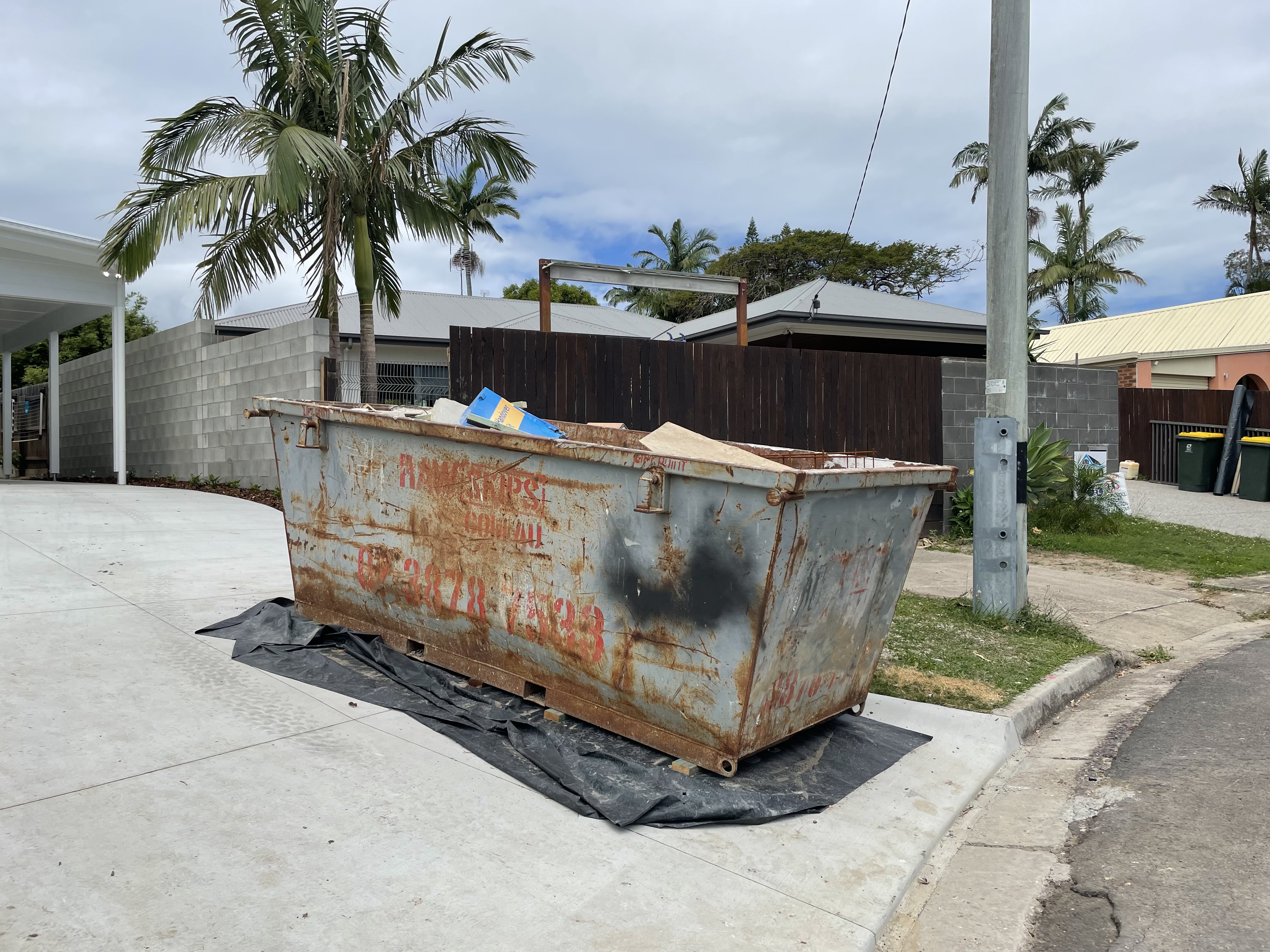
Find out more from Healthy Land and Water, capture cement runoff and other wet trades fact sheet.
Developers and consultants
Developers and consultants
It is your responsibility to set up appropriate governance controls and contracts on your project. These must outline how to stop sediment and waste moving off your site.
You must undertake all reasonable and practical steps to prevent sediment and sediment laden water from discharging off your site. This includes developing appropriate erosion and sediment control plans.
Also, to manage your development, council will typically need you to:
- provide a concept erosion and sediment control plan (ESC plan) with your development application. This must include treatment train and preliminary calculations of sizing of sediment basins
- allow for erosion and sediment control within development costs
- provide council with a construction ESC plan and design certificate (DOCX, 1.8MB) before any works on site (including clearing)
- conduct regular inspections (at least monthly) of erosion and sediment controls implemented on site
- submit the inspection certificate (DOCX, 866KB) to council when requested.
Construction erosion and sediment plans
The requirements of construction erosion and sediment plans are outlined in the Sunshine Coast Planning Scheme 2014 planning scheme policy for development works.
The ESC plan must cover all stages of work on the site and include:
- detailed calculations
- drawings of drainage and sediment basins.
For catchments less than 2 hectares, a 'deemed to comply' solution may be used. Refer to section 3.2 Sunshine Coast Council state planning policy technical note (PDF, 1.3MB).
The ESC plan must be certified by:
- a professional engineer (RPEQ) with training in erosion and sediment control
- a certifier practitioner in erosion and sediment control (CPESC).
In the design certificate (DOCX, 1.8MB) the engineer or CPESC is certifying that:
- the controls will achieve the State Planning Policy 2017 stormwater outcomes including that all exposed areas greater than 2500m2 have controls designed to achieve 50mg/l total suspended solids (TSS) or less, with 80% effectiveness
- the plan is in accordance with an accepted erosion and sediment control guideline, such as ICEA best practice guidelines for erosion and sediment control.
Mind the gap
Where a site involves many contractors, pollution can occur between contractors. For example, between clearing and civil works, or between civil works and landscaping. You must ensure controls are established and maintained until the site is stabilised.
Check if your site is right by using the checklist included with the Queensland Government procedural guide.
Contractors
Contractors
It is your responsibility to manage the potential environmental impacts on your site, including stopping sediment and waste moving off site.
Key reasonable and practical measures required to comply with general environment duty include:
- implement the erosion and sediment control plan (ESC plan) which
- has been certified (design (DOCX, 1.8MB) and inspection (DOCX, 866KB))
- meets the Environmental Protection Act 1994 and state planning policy requirements.
Note: you have a duty to develop a plan and implement controls that meets legislative requirements.
- conduct an effective monitoring program that measures and records the quality of all releases to stormwater and waterways
- regularly review controls on site, maintain and adapt them as necessary.
For further information refer to ICEA best practice guidelines for erosion and sediment control or a suitably trained professional.
You can also check if your site is right using this checklist.
Council fact sheets and forms
Council fact sheets and forms
- overview of council's construction management and waterway protection taskforce (PDF, 231KB)
Word (DOCX, 1.2MB) - erosion and sediment control design certificate (DOCX, 1.8MB)
- erosion and sediment control inspection certificate (DOCX, 866KB)
- erosion and sediment control for home owners fact sheet (DOCX, 2.3MB)
- erosion and sediment control for builders fact sheet (DOCX, 2.6MB)
- visual checklist for builders checklist (DOCX, 3.5MB)
- managing concrete on building sites fact sheet (DOCX, 1.8MB)
- managing dust on building sites fact sheet (DOCX, 1.2MB).
More information and resources
More information and resources
Information on the state of our rivers is available in the Healthy Land and Waters report card.
Erosion and sediment control requirements are outlined in the:
- State Planning Policy 2017 includes construction phase stormwater management design objectives
- Sunshine Coast Planning Scheme 2014 outlines current local development requirements and benchmarks including:
- planning scheme policy for development works
- Sunshine Coast Council technical note outlines how planning requirements can be achieved.
- Queensland Department of Environment and Science provide checklists to determine if you are undertaking all reasonable and practical measures to comply with the Environmental Protection Act 1994 including:
- procedural guide - releases to waters from building sites and small construction sites (less than 2500m2)
- procedural guide - releases to waters from land development sites and construction sites 2500m2 and greater.
- International Erosion Control Association best practice erosion and sediment control document is the current reference standard for erosion and sediment control on sites greater than 2500m2
- Water by Design website contains a range of resources including fact sheets and videos.
- Healthy Land and Water have a range of fact sheets, including:
- erosion and sediment control fact sheet kit - including building site checklist
- sediment management on construction sites fact sheet.
News and weather alerts
News and weather alerts
Construction Management and Waterway Protection newsletter:
- Volume 1 June 2022
- Volume 2 October 2022
- Volume 3 November 2022
- Weather Alert April 2023.
- Volume 4 June 2023
- Volume 5 September 2023
- Weather Alert September 2023
- Volume 6 December 2023
- Weather alert January 2024
- Volume 7 April 2024
- Weather alert April 2024
- Weather alert August 2024
- Volume 8 September 2024
- Volume 9 December 2024
- Weather alert February 2025
- Volume 10 March 2025
- Weather alert March 2025
- Volume 11 September 2025
Regional Erosion and Sediment, Education and Trial (RESET) site
Council's Environment Levy has supported the construction of the RESET site, a purpose-built erosion and sediment control (ESC) facility designed to assist the construction, development, agricultural and environment industries in improving ESC management, practice and understanding.
The site demonstrates and supports:
- current ESC practices, products and techniques;
- how products work under rainfall pressures on various soil types; and
- research and innovation by trialing new methods to minimise erosion, manage drainage and capture sediment.
The RESET site supports council's commitment to develop a comprehensive urban and regional erosion and sediment control program, through the Environment and Liveability Strategy, and the Corporate Plan objective to maintain 'A Healthy Environment'.
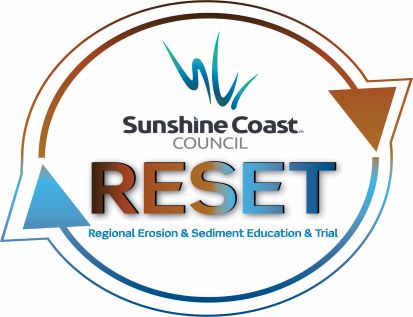 |
| For group booking information, resources and future partnerships, contact us at: [email protected]. |
Report pollution
Reports about significant pollution incidents can be made to Queensland Government 24/7 pollution hotline on 1300 130 372.
Contact council's development services to report sediment or litter entering a roadside gutter, stormwater system or waterway.
Stormwater Australia 2023 Awards for Excellence
WINNER - Excellence in policy and education
Sunshine Coast Council Construction Management and Waterway Protection Taskforce
Stormwater Queensland 2022 Awards for Excellence
WINNER - Excellence in policy and education
Sunshine Coast Council Construction Management and Waterway Protection Taskforce
2023 LGMA QLD Excellence Awards Community Shaping award nominee
2022 International Erosion Control Association (IECA) Australasia Environmental Excellence awards
FINALIST - Excellence for Innovation and/or Education to the erosion and sediment control industry
Regional Erosion & Sediment, Education & Trial (RESET) site
Featured
Is your site right
Is your site right
